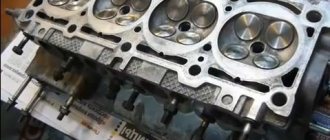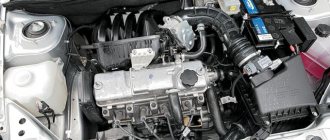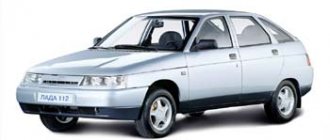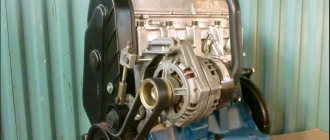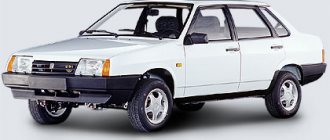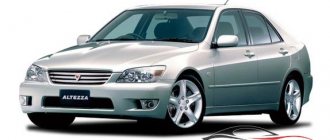If we consider the VAZ 2114, the engine on this model is a modern version with an injector. Moreover, in different years of production, different versions of this power unit were installed on the car.
By the way, other popular models also received the same engine (for example, the engine of the VAZ 2115, 2113, etc.). Next, we will look at the VAZ 2114 injector engine and its technical characteristics in more detail, as well as the advantages and disadvantages of this internal combustion engine.
Also, special attention should be paid to the possibilities of tuning and modification, which allow you to improve the 2114 engine and get more out of the power plant.
Motor 2114: characteristics and features
Let's start with the fact that the VAZ 2114 engine, an 8-valve injector, was created on the basis of the unit that was installed on the VAZ 2108. This engine was taken as the basis, since the engine on the G8, which was popular at one time, turned out to be quite successful, simple and reliable.
Let us also add that over the years of production 2114, the power unit was further refined and modernized. As a result, as of today there are five versions of the internal combustion engine. For this reason, the design of the VAZ 2114 engine and its characteristics will depend on the year of manufacture of the model, since the engines differ in power and design (three versions of the internal combustion engine have 8 valves, two versions have 16 valves). The timing drive on all engines is belt driven.
We also note that early versions had only a relatively simple BC, but since 2007 the motors received a full-fledged ECU, which began to control engine operation based on data received from numerous ECM sensors.
Considering the similarity of these power units, the performance of the different versions does not differ much. For example, if we consider VAZ 2114 engines, then the main characteristics of the engines are as follows:
Petrol engine VAZ 2111 injector
- Working volume: 1.5 liters;
- Number of cylinders: 4;
- Number of valves per cylinder: 8;
- Power: 77 hp;
- Fuel consumption: 8.2l/100 km.
Gasoline engine VAZ 21114 injector:
• Working volume: 1.6 liters; • Number of cylinders: 4; • Number of valves per cylinder: 8; • Power: 81.6 hp; • Fuel consumption: 7.6l/100 km.
Petrol engine VAZ 21124 injector:
- Working volume: 1.6 liters;
- Number of cylinders: 4;
- Number of valves per cylinder: 16;
- Power: 89.1 hp;
- Fuel consumption: 7.0l/100 km.
All engines are paired with a 5-speed manual transmission and have proven themselves to be simple and reliable. The service life of the VAZ 2114 engine is, on average, about 150 thousand km for an engine with an 8-valve timing belt, as well as 180 thousand km for a version with 16 valves.
Also, to increase service life, you need to regularly service the internal combustion engine, and also know what kind of oil to pour into the engine. You also need to follow the operating instructions. This approach makes it possible to ensure that the engine in a VAZ 2114 can easily travel about 200 thousand km. and more without major repairs.
Typical breakdowns
The very first 1.5 liter engine 2114 has disadvantages:
- periodic valve adjustment;
- unreliable injection system;
- loosening the exhaust manifold nuts;
- Leaking gaskets of the fuel pump, distribution sensor of the ignition system.
The next 1.6 liter engine does not cause any particular problems for the owner, with the exception of high vibration and noise loads. The weak point traditionally remains the valves, which have to be constantly adjusted.
Adjustment of valves
The internal combustion engine from Lada Kalina 11183 was installed on the fourteenth model solely to meet Euro-3 standards. It has typical disadvantages for a linear series and is no different.
The first sixteen-valve engine 21124 does not bend the valves, the gaps in which are adjusted by hydraulic pushers. However, the belt needs to be tightened after 15,000 km due to the large number of attachments. The second and last in the line of fourteenth ICE models, ICE 21126, has increased power. In addition to typical malfunctions, if the timing belt breaks, the piston will bend the valve due to insufficient recess depth.
When to service the engine and what you need to know
So, on 2114, the engine needs to be serviced every 10-12 thousand km. mileage In this case, the main procedures within the framework of maintenance are:
• replacing engine oil and oil filter every 10 thousand km; • replacing spark plugs, air filter, fuel filter every 25 thousand km; • replacement of the timing belt, roller, high-voltage wires every 45 thousand km;
Please note that a broken timing belt will cause the valves to hit the pistons, the valves themselves will bend, and both the piston and the VAZ 2114 cylinder block may be damaged, etc. In other words, the valves on this engine are bent, and to eliminate the consequences, a major overhaul of the VAZ 2114 engine will be required.
For this reason, it is necessary to monitor the position of the timing belt and change it together with the roller according to the regulations or taking into account obvious signs of wear. Let us also add that experts recommend changing the transmission oil in the gearbox every 50-60 thousand km. mileage
As for engine oil, although the VAZ 2114 injector engines are similar, depending on the specific model of the unit, you only need to fill in the recommended oil. To understand what kind of oil to pour into the VAZ 2114 engine, you need to know exactly what kind of power unit is on the car.
To put it simply, according to factory recommendations, the best option for a VAZ 2114 engine for an 8-valve internal combustion engine is 10W40, while for a 16-valve engine it is better to fill it with 5W30. Experienced drivers and mechanics recommend using semi-synthetic oil, as it is the optimal solution in terms of quality and price.
Sensors
The temperature sensor is a small thermostat in the cylinder head pipe; it is used to control the temperature of the antifreeze.
The knock sensor is screwed into the cylinder block and detects knocking phenomena occurring in the engine. If the slightest vibration occurs in the motor, the impulse is transmitted to it. After this, based on a signal emanating from the control unit, the ignition is adjusted, during which unwanted fuel flashes that lead to detonation are eliminated.
The oxygen level sensor is installed in a closed-loop system. Its mounting location is located in front of the muffler. The normal temperature reaches 360 degrees, and a special heating element is provided to actively warm up the motor.
The air flow sensor is mounted near the air filter. It consists of three elements, one of them determines the ambient temperature, while the rest are needed to maintain a certain temperature level exceeding that of the first. The air flow cools all heating elements, and the ECU uses this information to determine air flow and set the duration of opening or closing of the injectors.
The location of the CO potentiometer is the engine compartment (the wall of the air supply box). This element sends a signal to the computer used to adjust the desired proportion of air and fuel.
The vehicle speed sensor is located near the engine oil level dipstick. Through it, a signal is sent to the ECU similar to the speed of the drive wheels.
Synchronization sensor - located on the oil pump cover near the generator drive pulley. Based on the information coming from it, the control unit calculates the crankshaft speed and then sends a characteristic signal to the injectors.
Frequent internal combustion engine malfunctions
Let us immediately note that the design of the VAZ 2114 and the engines in particular on this model may have a number of differences. Early versions are simpler, while in the latest modifications the unit received more complex electronic equipment, ECM sensors, etc.
One way or another, most of the problems that the 2114 engine can present:
• the “check” light is on, the speed fluctuates; • the motor does not develop power; • the power unit stalls, stalls or does not start; • extraneous noises and knocks appeared in the engine;
As with any other fuel-injected internal combustion engine, it is necessary to perform engine diagnostics, since there are many possible reasons why failures occur.
For example, the failure of one of the ECM sensors may result in the ECU receiving incorrect data and the controller going into emergency mode. You also need to pay attention to timing, valve adjustment, etc.
If we consider the VAZ 2114 engine itself, its repair is not very different from the repair of the VAZ 2108 engine. In turn, this allows experienced car owners to repair the specified internal combustion engine with their own hands.
Supply system
The air filter is located in the front part of the engine and is equipped with rubber retaining elements. If it becomes necessary to replace them, the corrugation is located on the same parallel with the center line of the car. The main function of the throttle pipe is determined by dosing the air flow entering the intake pipe. The air entering the engine is adjusted thanks to the throttle valve, which is connected to the accelerator pedal. The throttle pipe consists of two components: the throttle position sensor and the idle speed control.
Refinement and boosting of the VAZ 2114 engine
It should be separately noted that tuning the VAZ 2114 engine is quite common. Taking into account the fact that the car is budget and at the same time reliable, various projects are often implemented on its basis. Ordinary car enthusiasts also tune the engine.
The most common and cheapest solution is chip tuning of the VAZ 2114 engine. In short, the factory ECU firmware is changed to modified versions, which allows you to increase power, improve engine response, reduce fuel consumption, etc.
If we are talking about a comprehensive modification, in this case, first changes are made to the design of the internal combustion engine itself (the working volume is increased by boring the cylinders, lightweight parts are installed instead of standard ones, the camshaft is changed, etc.).
Let us also add that a turbine for a VAZ 2114 engine is also a fairly popular and widespread way to increase the power of a power unit.
We also recommend reading the article about what determines the service life of a VAZ engine before overhaul. From this article you will learn what the average service life of a VAZ engine is on different models, as well as what factors affect the service life of the power unit.
Of course, such solutions require serious financial investments, a large amount of work needs to be done, and sets of expensive parts must be installed. Also, after boosting, it is necessary to flash the ECU or install individual controllers so that the control units can effectively control the operation of the internal combustion engine after modification.
Fuel system
It consists of many components: a fuel pump, a fuel pressure regulator, a fuel filter, a fuel line, injectors and a ramp, thanks to which fuel enters the engine. The ramp is a strip on which the injectors and fuel pressure regulator are located, and is attached with two bolts to the intake pipe. The injectors are mounted on the fuel rail, its function is to supply fuel to the engine. An injector is an electromagnetic valve that opens and sprays fuel under pressure in a thin stream after it receives a corresponding impulse from the ECU. Upon contact with the heaters, the fuel evaporates and is fed through the needle pin into the combustion chamber.
Source
The main mistakes made when tuning
Many people try to add power to the engine, but at the same time make typical mistakes. The leading ones among them are:
- installation of cutters in garage conditions (this work requires high precision);
- use of unnecessary and expensive spare parts;
- lack of suitable firmware for a sports camshaft or other elements.
Before buying expensive spare parts, you should pay attention to the recommendations of the specialists. They created a list of useless components:
- A receiver with an increased volume is good only at medium and high speeds, but for work in the range from 1000 to 2500 rpm, a standard spare part is more preferable.
- A zero filter, called a “chandelier,” is a fairly useful addition, but you will have to constantly clean it with special chemical compounds. This will increase the cost of maintaining the car.
- A throttle valve of increased diameter does not increase power too much, since the engine always has enough air.

